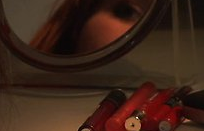A recent Food and Drug Administration study found lead contamination in major national lipstick brands such as L’Oreal and Maybelline, but it doesn’t stop St. Thomas junior Jessica Nesbit from sporting ruby-red lipstick on a daily basis.
“The days that I don’t, I almost feel like I’m naked,” Nesbit said.
Tom Marsh, St. Thomas biochemistry professor, said the lead could be used to enhance the color of lipsticks.
“Certainly lead is going to give you some pigmentation. So different lead salts will give you different colors,” Marsh said. “The reason why we use lead is because it’s actually a really easy material to work with, and it has nice material properties at room temperature.”
Marsh said lipstick isn’t the only place where lead can be found.
“The EPA (Environmental Protection Agency) and FDA (Food and Drug Administration) will set acceptable levels. So, you’ll see that (lead is in) ground water,” Marsh said. “There is a part per billion, like fractions of a part per billion, which is… one piece of lead for a million parts of water essentially.”
Although the contamination is present, lead isn’t enough to break up Nesbit’s lip-lock with her lipstick.
Nesbit said she believes that the best way to steer clear of contamination is to be an informed shopper.
“To be a good consumer, you have to be aware of what you’re purchasing and what’s in what you’re purchasing,” Nesbit said.
Olivia Cronin can be reached at cron2722@stthomas.edu.



